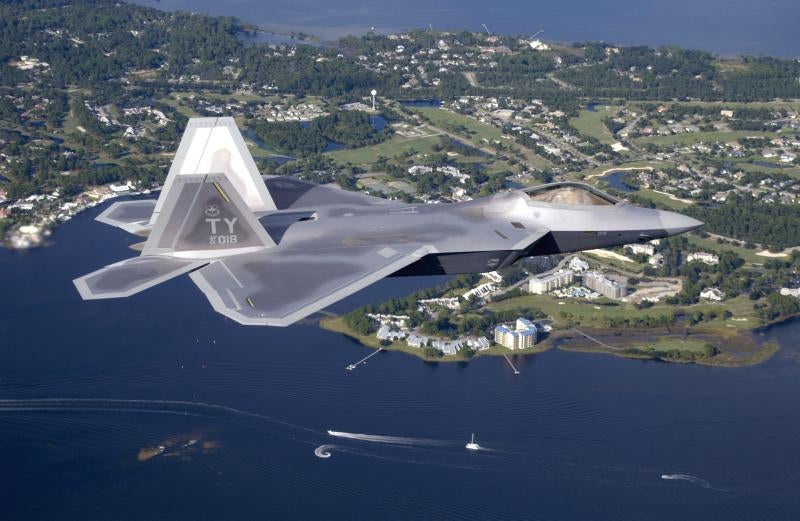
The US Air Force’s (USAF) Scientific Advisory Board (SAB) team has failed to determine the root cause of physiological events that were experienced by the pilots while piloting the Lockheed Martin-built F-22 Raptor aircraft.
The radar-evading F-22 Raptors have been barred from flying above 25,000ft since January 2011 following the crash of a jet in Alaska during a training flight, as well as reports of pilots showing hypoxia-like symptoms while flying the aircraft.
The nine-member SAB team chaired by retired Air Force general Gregory Martin, an aviator and a former commander of two major commands, conducted a seven-month study on the F-22’s onboard oxygen generation systems.
Martin said during a Pentagon briefing: "From April 2008 until May 2011, the Air Force experienced 14 physiological incidents with the fleet of F-22s. Each incident was investigated, and of those incidents, 10 did not reveal a root cause."
"We were unable to determine a root cause, but we were able to put in place the proper safety measures and risk mitigation techniques that would allow the F-22 fleet to return to fly … to ensure the integrity of the life support system."
How well do you really know your competitors?
Access the most comprehensive Company Profiles on the market, powered by GlobalData. Save hours of research. Gain competitive edge.

Thank you!
Your download email will arrive shortly
Not ready to buy yet? Download a free sample
We are confident about the unique quality of our Company Profiles. However, we want you to make the most beneficial decision for your business, so we offer a free sample that you can download by submitting the below form
By GlobalDataThe advisory board categorised nine findings and 14 recommendations into three parts, acquisition processes and policies, organisational structure recommendations, and equipment recommendations.
Air Combat Command director of operations major general Charles Lyon said that the implementation phase of the recommendations was already into action while the air force continues to pursue the cause of the incidents.
Incidents related to the problem have followed despite precautionary measures taken by the USAF including rigorous inspections, enhanced safety procedures, new training on life support systems, improved physiological monitoring and continued data collection.
The fleet resumed flight operations in late September 2011 following a four-and-a-half month grounding after mitigating the risk factors associated with the aircraft’s oxygen system.
The F-22A Raptor is a supersonic, advanced tactical dual fighter jet powered by a F119-100 Pratt & Whitney engine and designed for stealth, greater cruise speed and agility. It has been used by the USAF since December 2005.
Image: The first operational F-22A Raptor on its way to Tyndall Air Force Base. Photo: USAF photo by Tech. Sgt. Mike Ammons.



